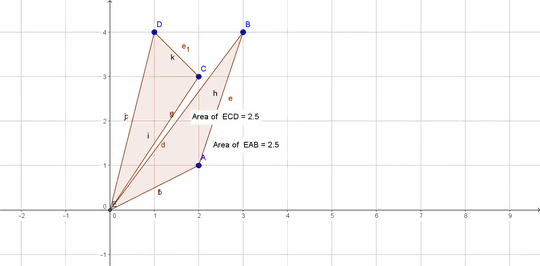I am trying to understand why, geometrically, we have that
$$ \det(A) = \det(A^T). $$
To build intuition, I am thinking in 3 dimensions. So let $A$ be a $3 \times 3$ matrix of real numbers.
First, I know that if
$$ \det(A) = \left| \begin{array} xx_1 & y_1 & z_1 \\ x_2 & y_2 & z_2 \\ x_3 & y_3 & z_3 \end{array} \right| $$
then $|\det(A)|$ can be thought of as the area of a parallelepiped formed by $(x_1, x_2, x_3)$, $(y_1, y_2, y_3)$, and $(z_1, z_2, z_3)$.
Moreover, the fact that $\det(A) = \det(A^T)$ implies that $|\det(A)|$ can also be thought of as the area of the parallelepiped formed by
$(x_1, y_1, z_1)$, $(x_2, y_2, z_2)$, and $(x_3, y_3, z_3)$.
Question: Does this also mean that the area of a parallelepiped formed by any permutation of the $x_i$, $y_i$, and $z_i$ is equal to $|\det(A)|$? For example, does the area of a parallelepiped formed by the coordinates $(x_1, y_2, z_3)$, $(x_2, y_1, z_2)$, and $(x_3, y_3, z_1)$ equal $|\det(A)$|?
